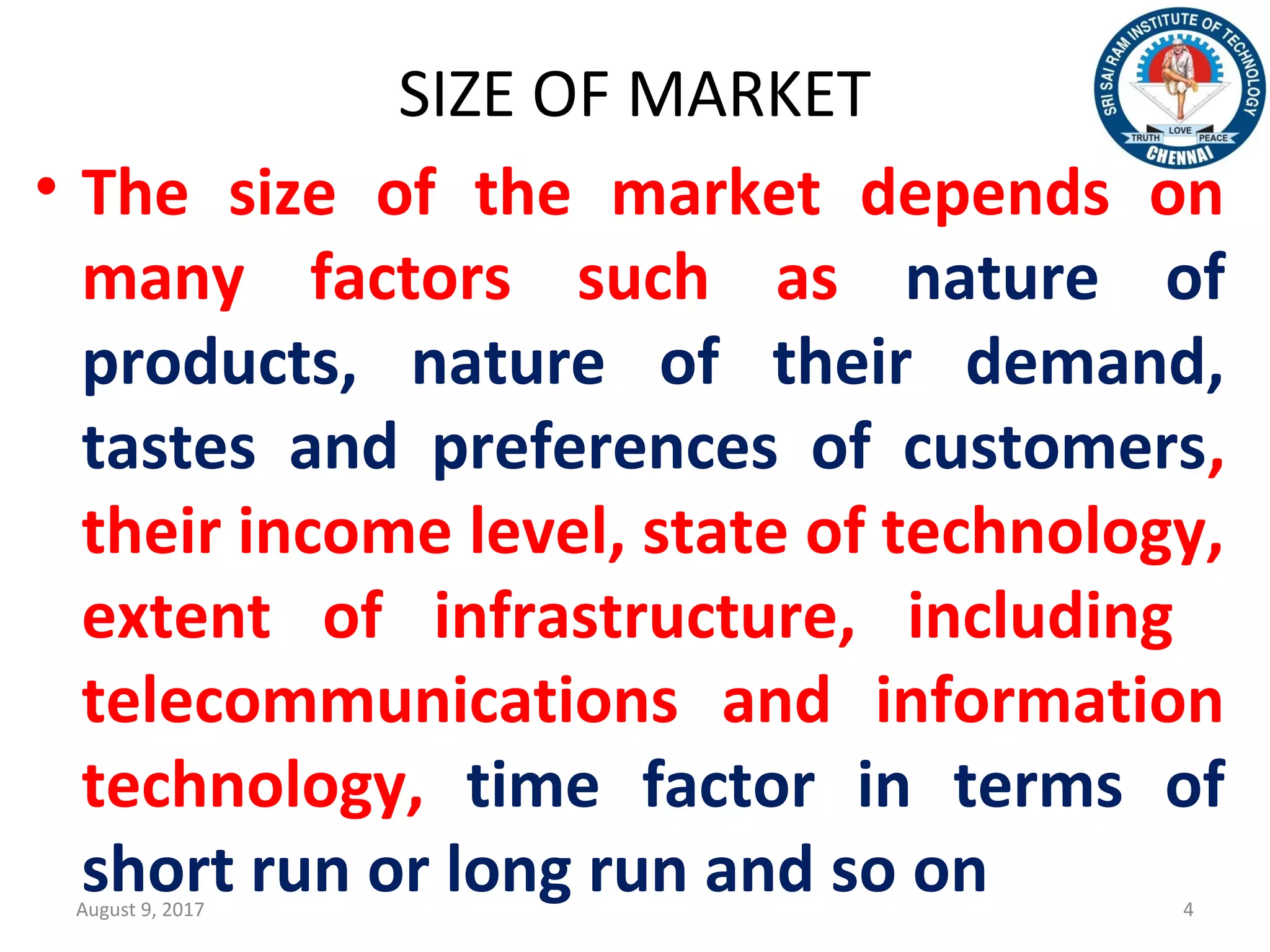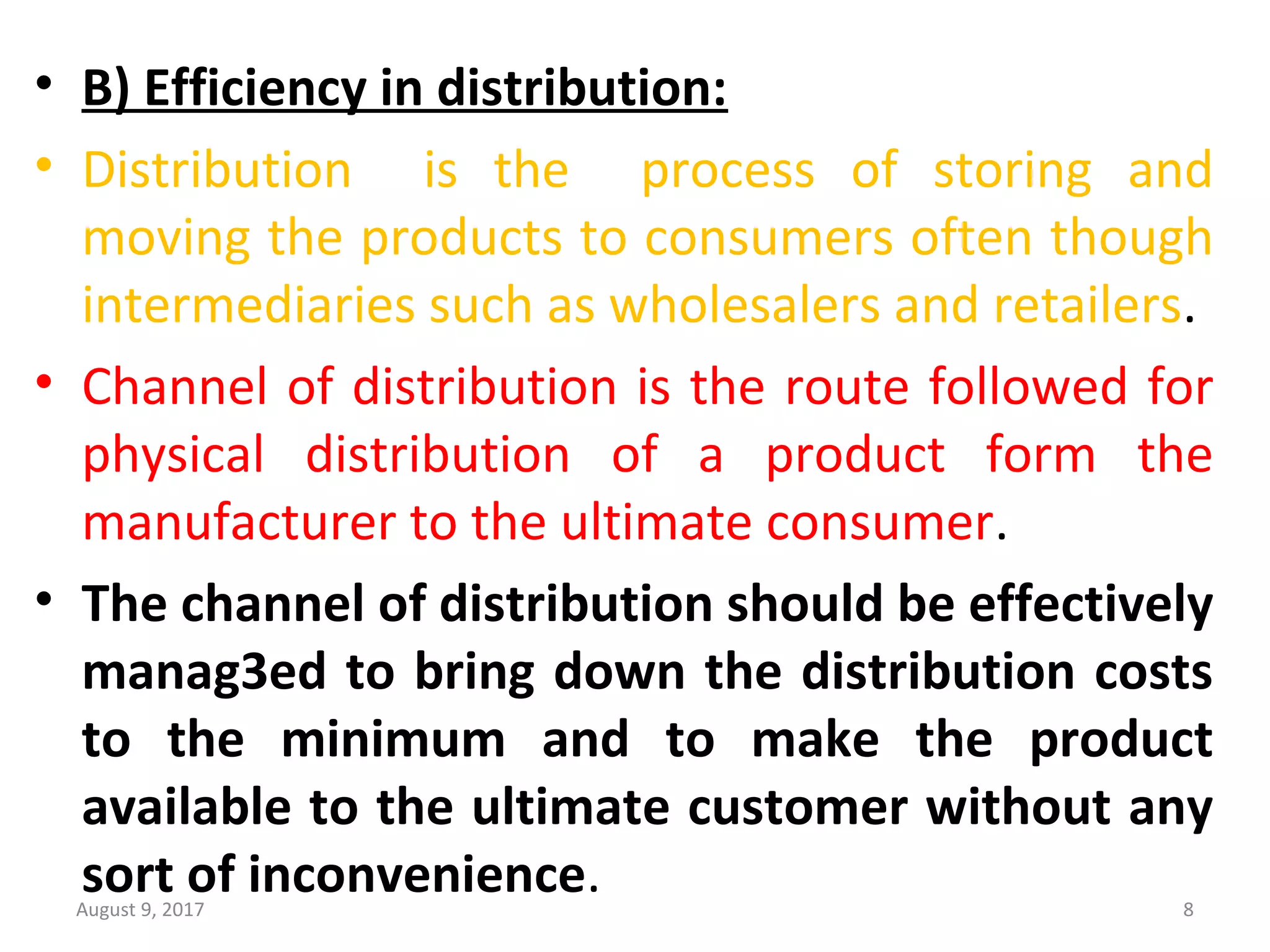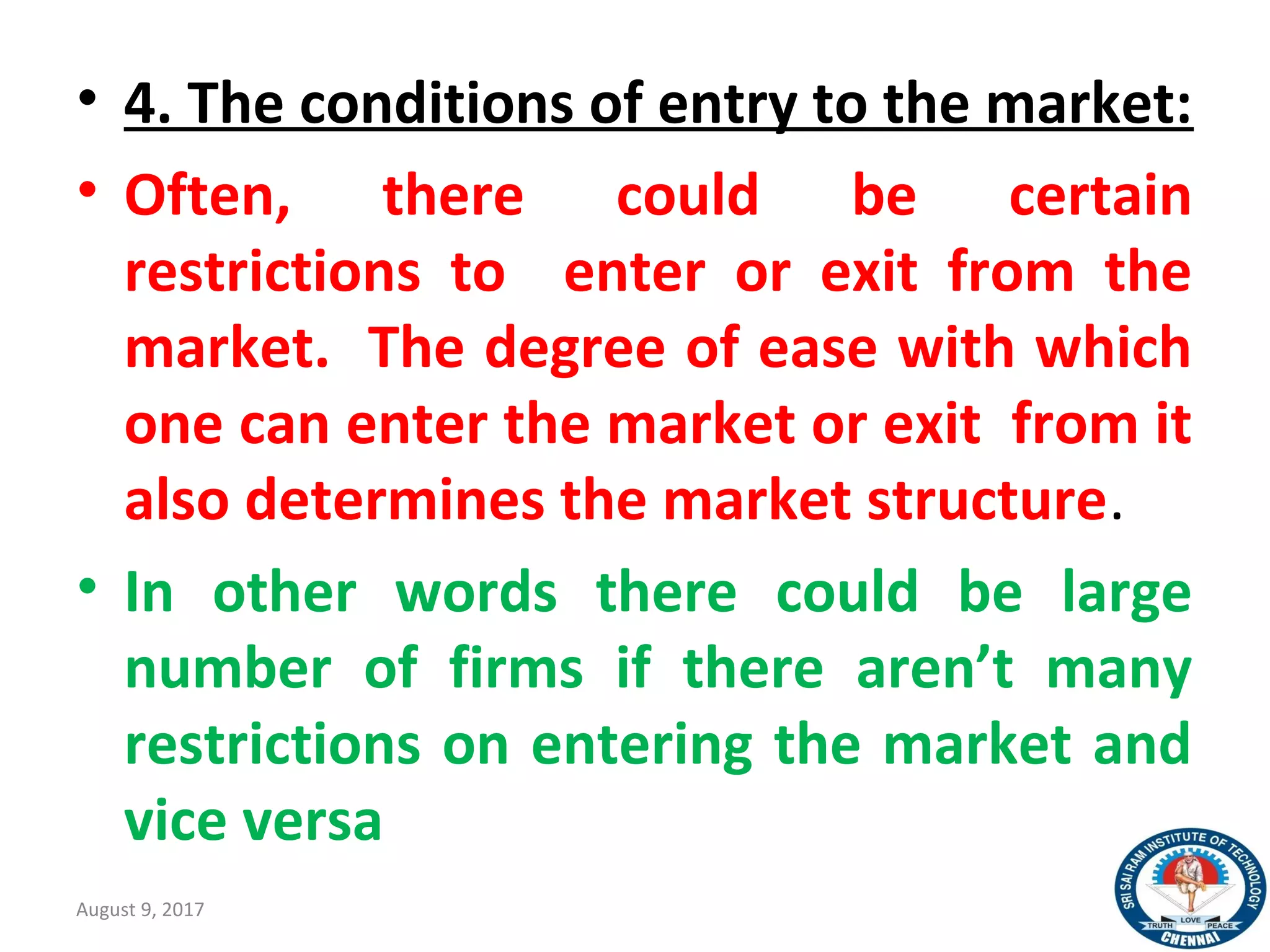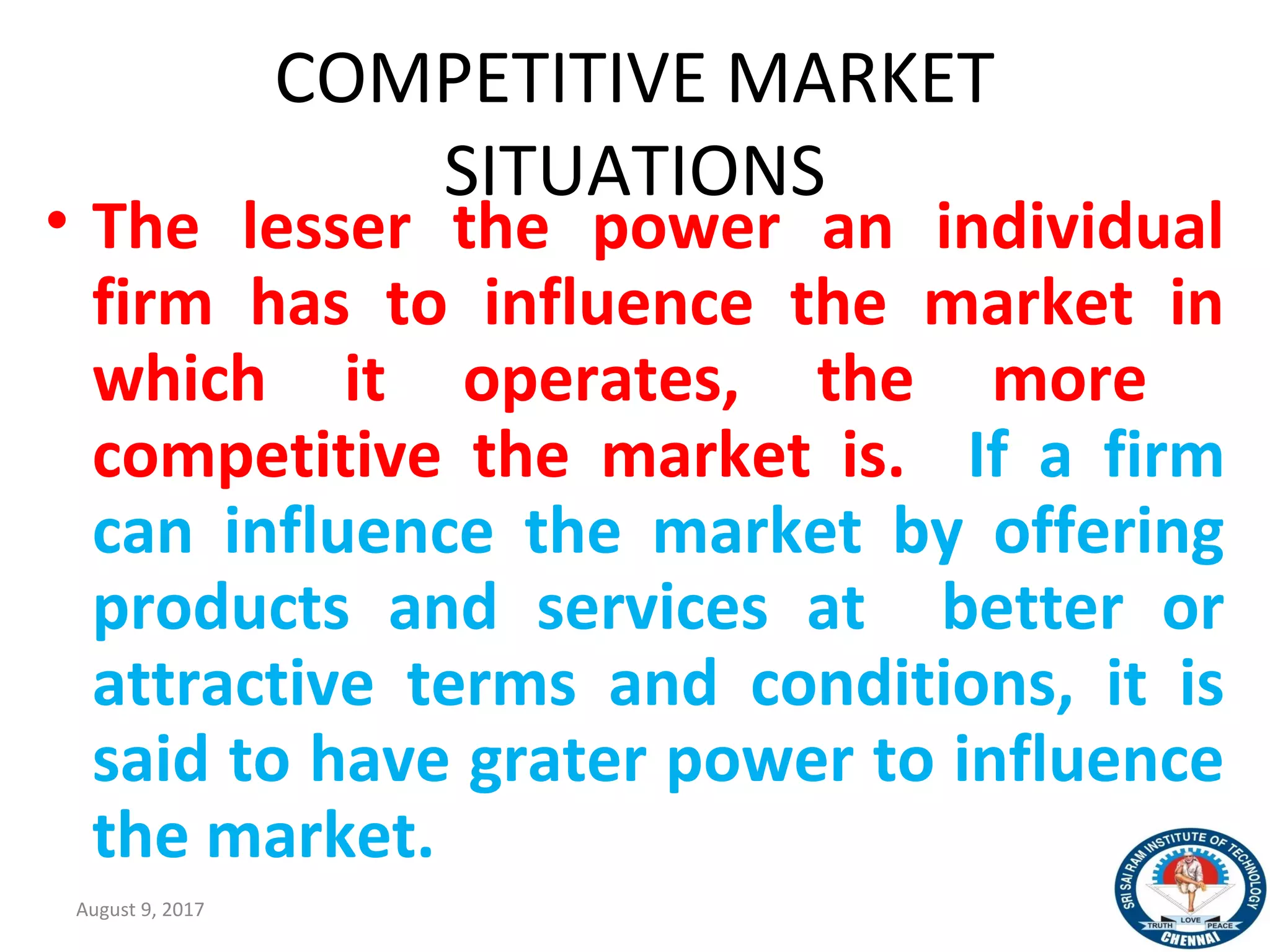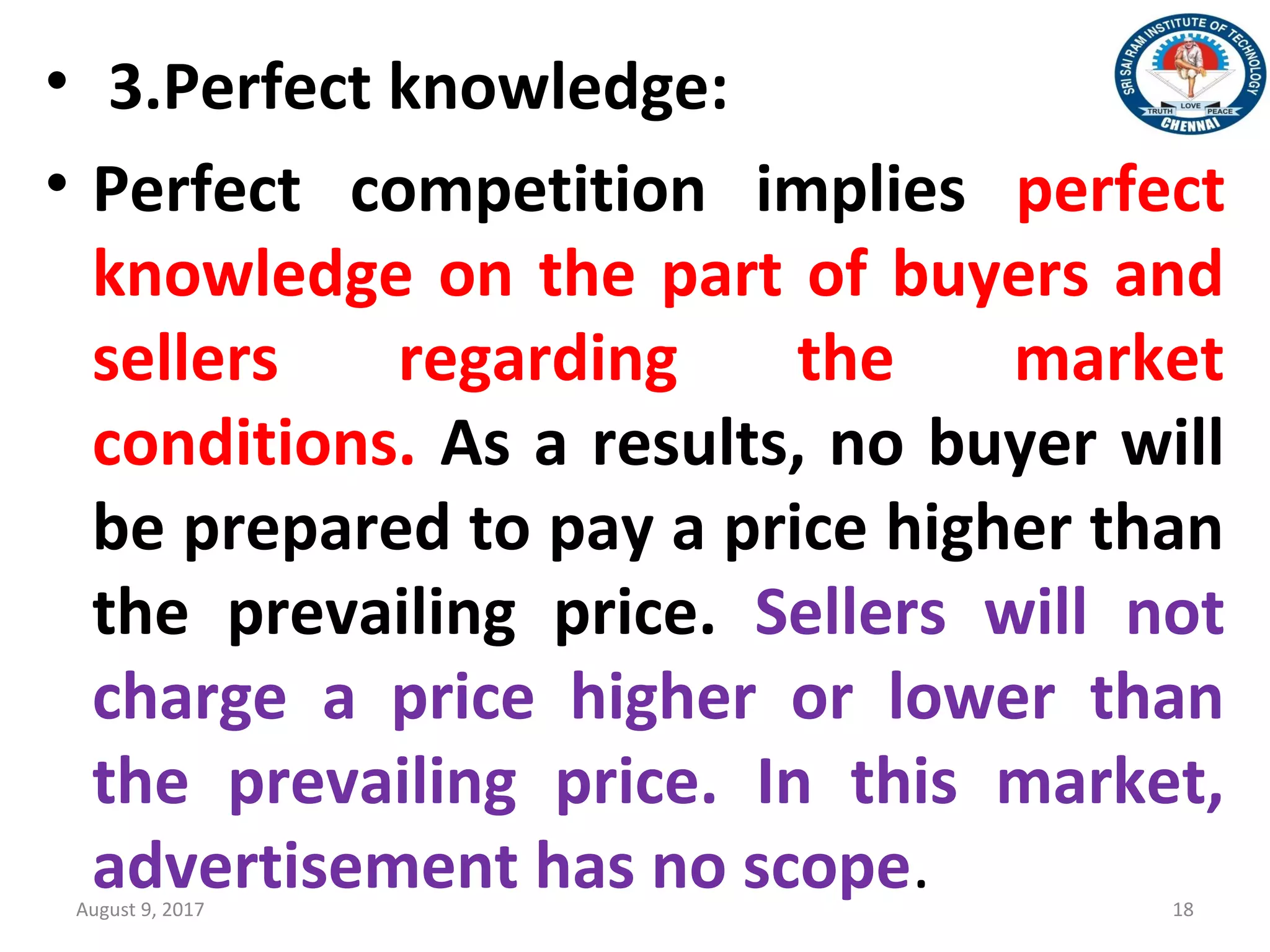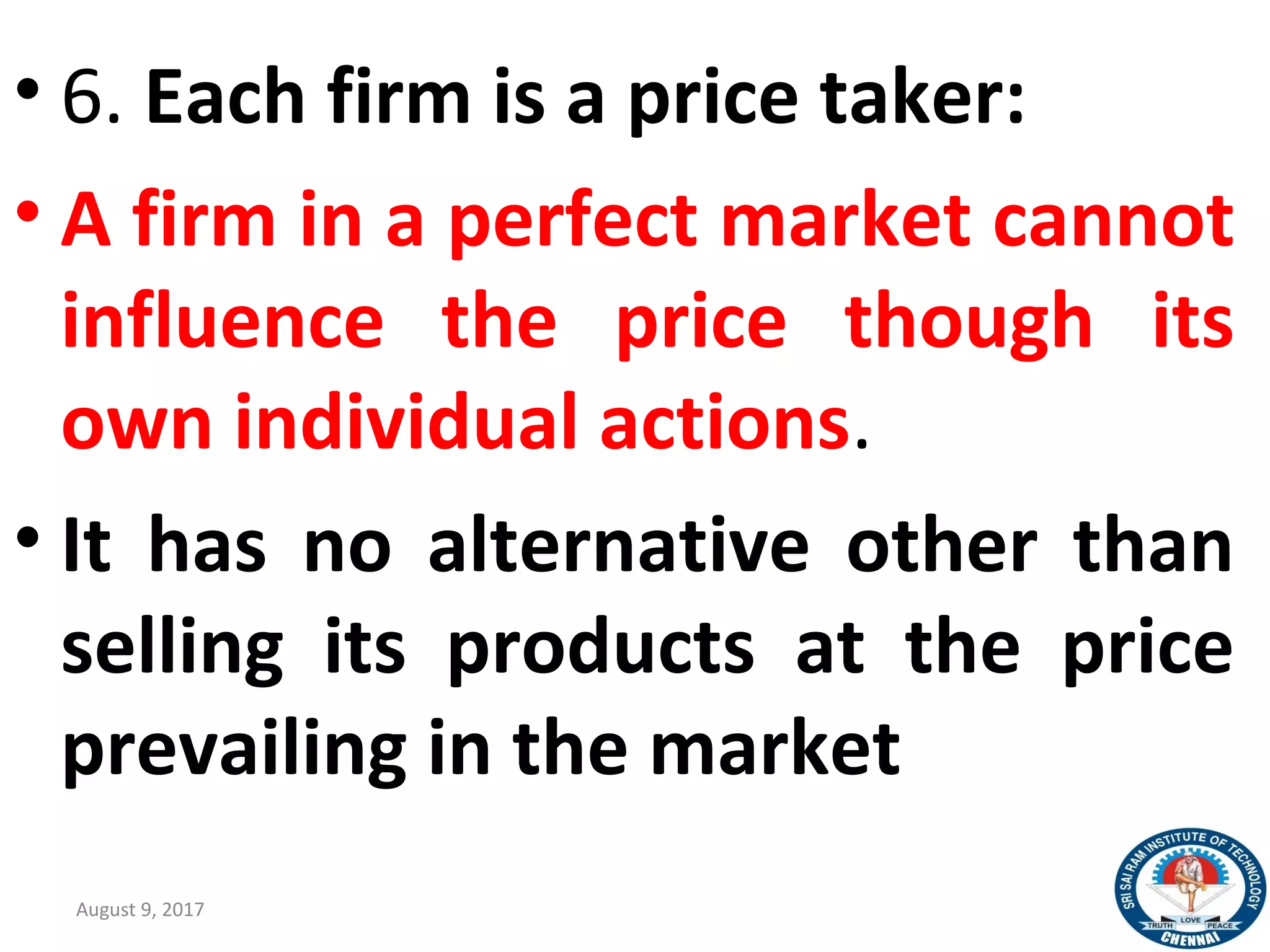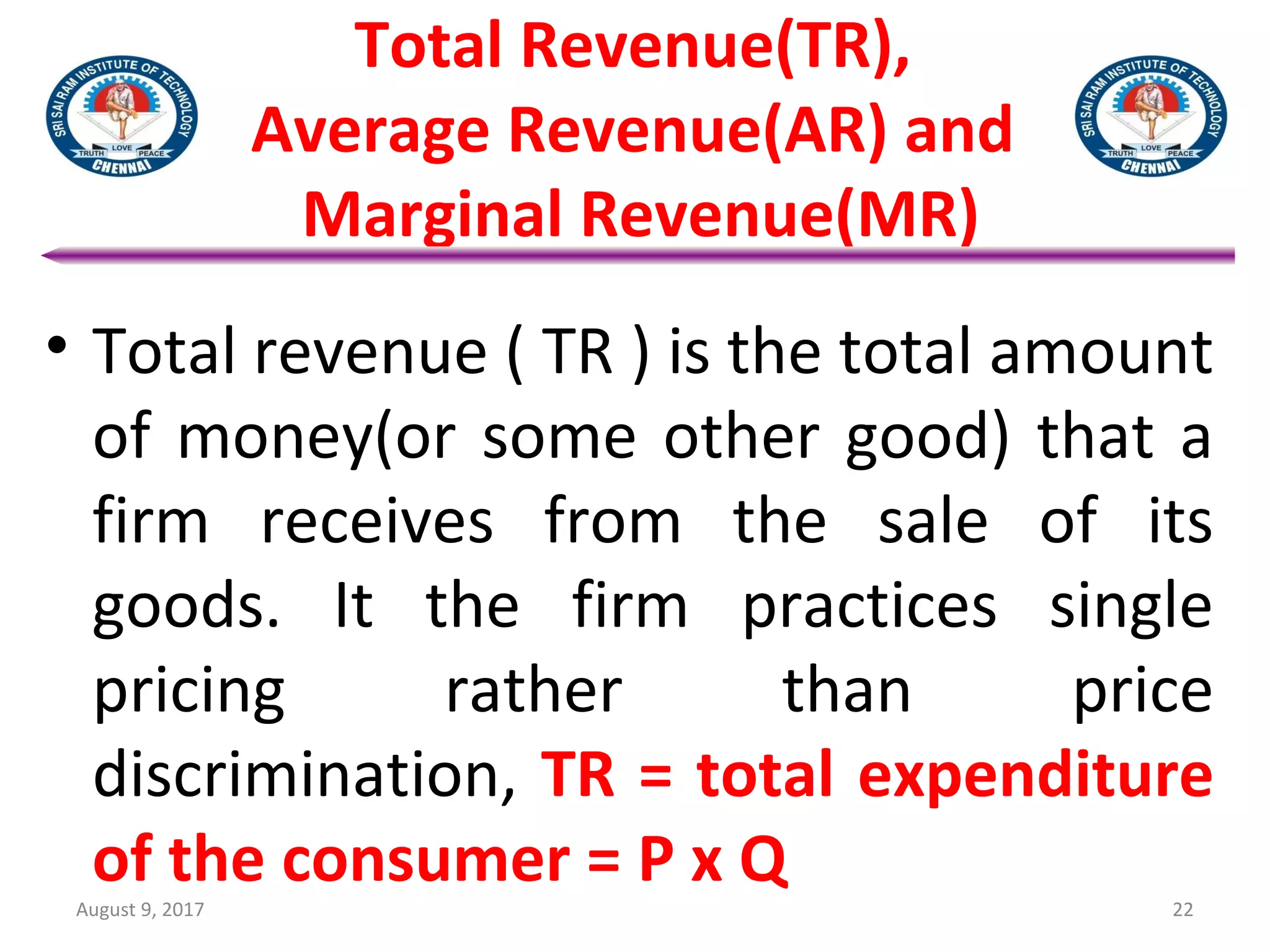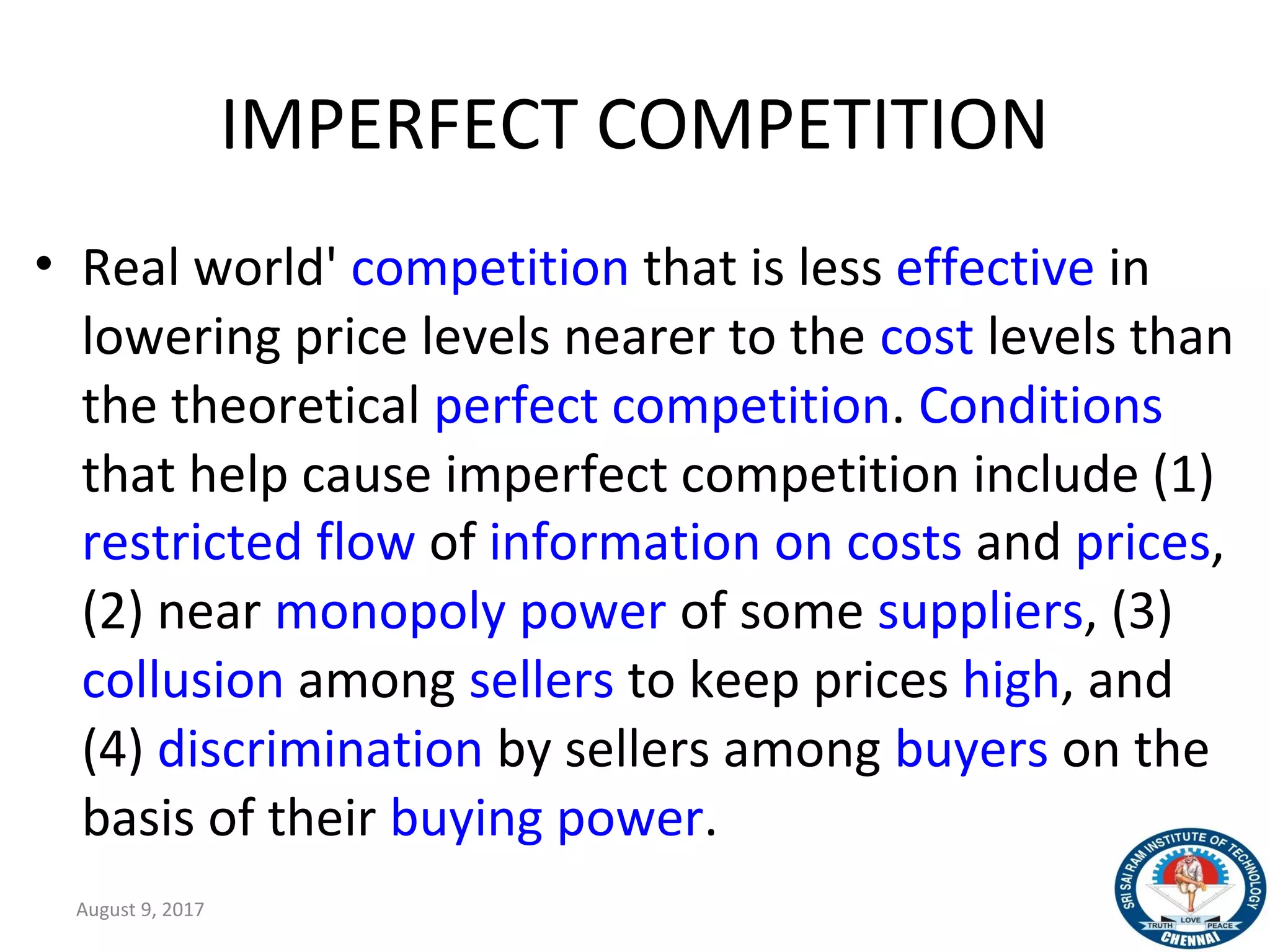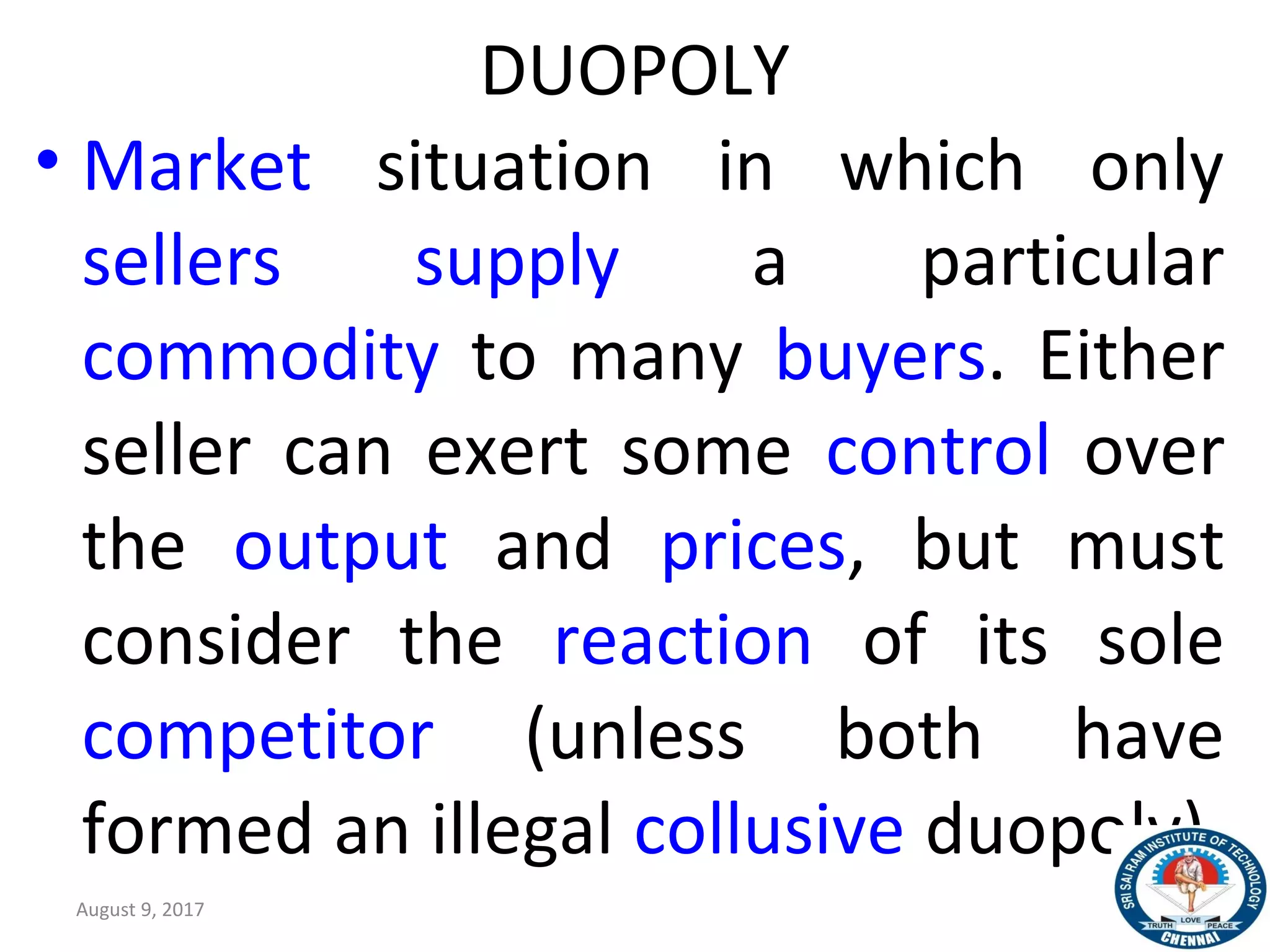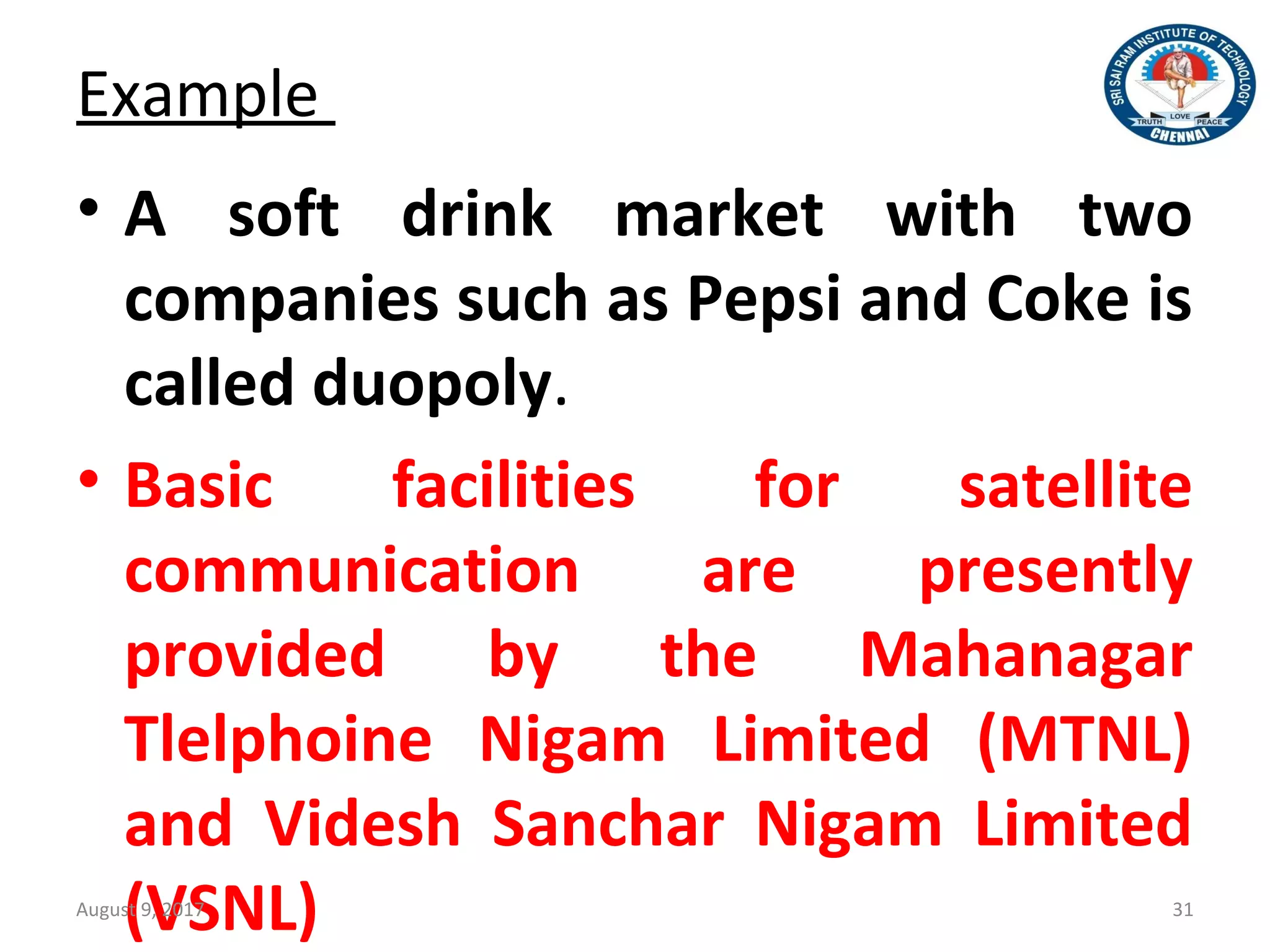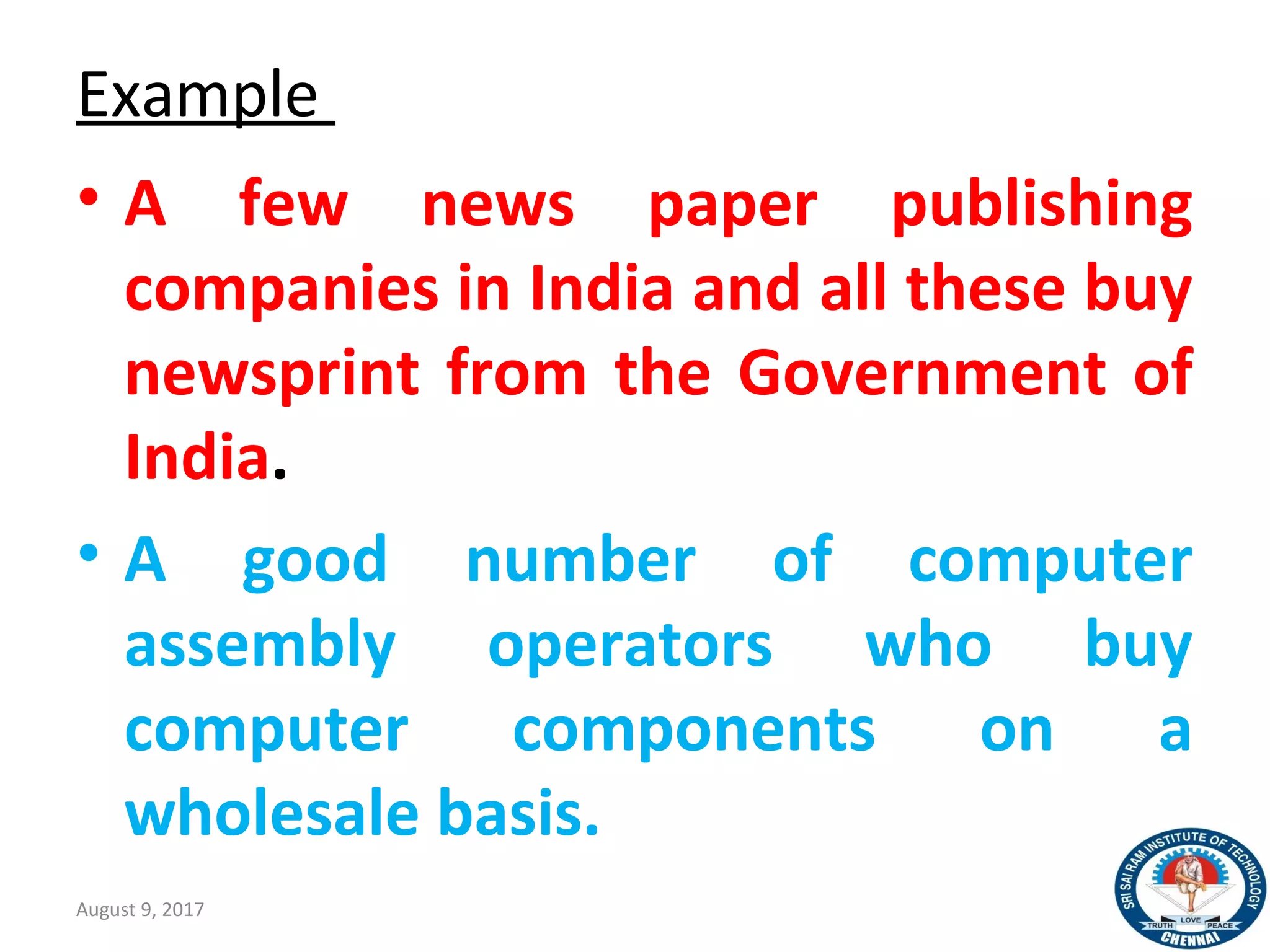1. The document discusses various concepts related to markets including definitions of a market, types of markets based on location, how the definition has changed with technology, and factors that determine the size of a market.
2. It also covers topics such as market conduct, performance, structure, competitive situations, and types of competition including perfect competition.
3. Perfect competition is defined as a theoretical free market situation with numerous small buyers and sellers, free entry and exit, perfect information, and homogeneous products.



